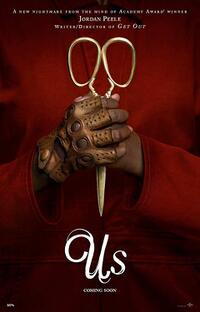This week I found an interesting video called
"Netflix's War on Mass Culture" and I immediately thought, "Oh no, they're not going to tell me that Netflix is bad! Are they?" The reality is both yes, and no. As I watched the video, despite its daunting title, I found that the narrative was somewhat open for interpretation and I will answer to that later on.
The video basically outlined how the normal practice of watching television had gone on in previous generations and how Netflix is different from that. At first the video accuses Netflix of trying to replace the foundations of television with a new system based on the current values of the internet generation and also of trying to change viewer behavior. Of course in my mind I say, "That's great that such things can evolve as we do!" However, this video takes the opposite approach and claims that Netflix has a hidden agenda.
 |
| Even the Netflix logos have a cool history! (source) |
The origin story of Netflix is generally known by the average American; it was at first a DVD mail order service that after a while began to offer some of its most popular shows and films via online streaming. Its also infamously known as the company that eventually brought down Blockbuster Video, a VHS movie rental store that refused to "get with the times." Therefore proving that evolution of entertainment is imperative.
In the history of entertainment, many shows and events were broadcasted live, as reliable technology for recording video and audio didn't come until much later. Thus live entertainment was, for much of history, seen as commonplace. Even as pre-recorded shows began to air, live television did not disappear, as today we still have live news, sporting events, award shows, reality shows, etc. Though the focus now has shifted to pre-recorded shows being the majority and live television being the
minority. Having our choice of scripted shows to watch echos the retail market, just like people could go to Blockbuster and pick out only what they wanted to watch rather than being subjected to "what's on." Also, unlike cable companies, Netflix pays attention to their viewers, what they watch and what they like, and uses algorithms based on the genre or starring actors to predict other shows you might be interested in.
 |
| Netflix knows what you like! "OITNB" was their top rated show last June. (image source) |
The video states that mainstream entertainment is based on a large pillar of popular culture, flanked by smaller sub-cultures and that Netflix is attempting to change this architecture into a world of “fandom islands” where people rarely interact with others outside of their island. It gives people less exposure to things that they wouldn’t normally watch but I don’t see that the unity of people loving a show will cease because of this. It in fact adds a more profound sense of connection. For someone to find another person who likes the same obscure show that they do, instead of being crowded out by the overall tone of what the majority of people are watching, makes that show and that connection even more special. They argue that entertainment only based on fandom is non-traditional and un-American, but I have so far seen very little change in the unity and passion of people who have made the transition to online streaming.
In the past, network “event television” aimed to get a large group of people watching the same thing at the same time - but what is the harm in a large group of people watching the same thing, but at their own pace? Netflix is viewed by a large amount of people, but that doesn’t make it
less valuable, in fact people are watching more hours of television than
they did in the 1990s. This makes it even more important that we pay attention
to what we are watching and make it more readily available, rather than restricting people to less choice because of tradition
 |
| Even cable networks have "On Demand." They have to admit it is part of our modern era of entertainment. (image source) |
The anti-Netflix argument in the video uses the viewpoint of Vladimir
Nabokov who believes that humanity’s “highest yearning” should be to leave
behind all desire to be “current.” I however, argue that modern people have a
very high regard for being up-to-date on all parts of culture, especially where
they consider it to be a part of their identity. This does contrast to a time,
even a hundred years back, when people were wary of new inventions such as television
or even electricity - but today a vast number of people take great pride in
wearing the latest trend, going to see the newest movies, and sharing the most
popular memes. What’s wrong with that? I say nothing!

















